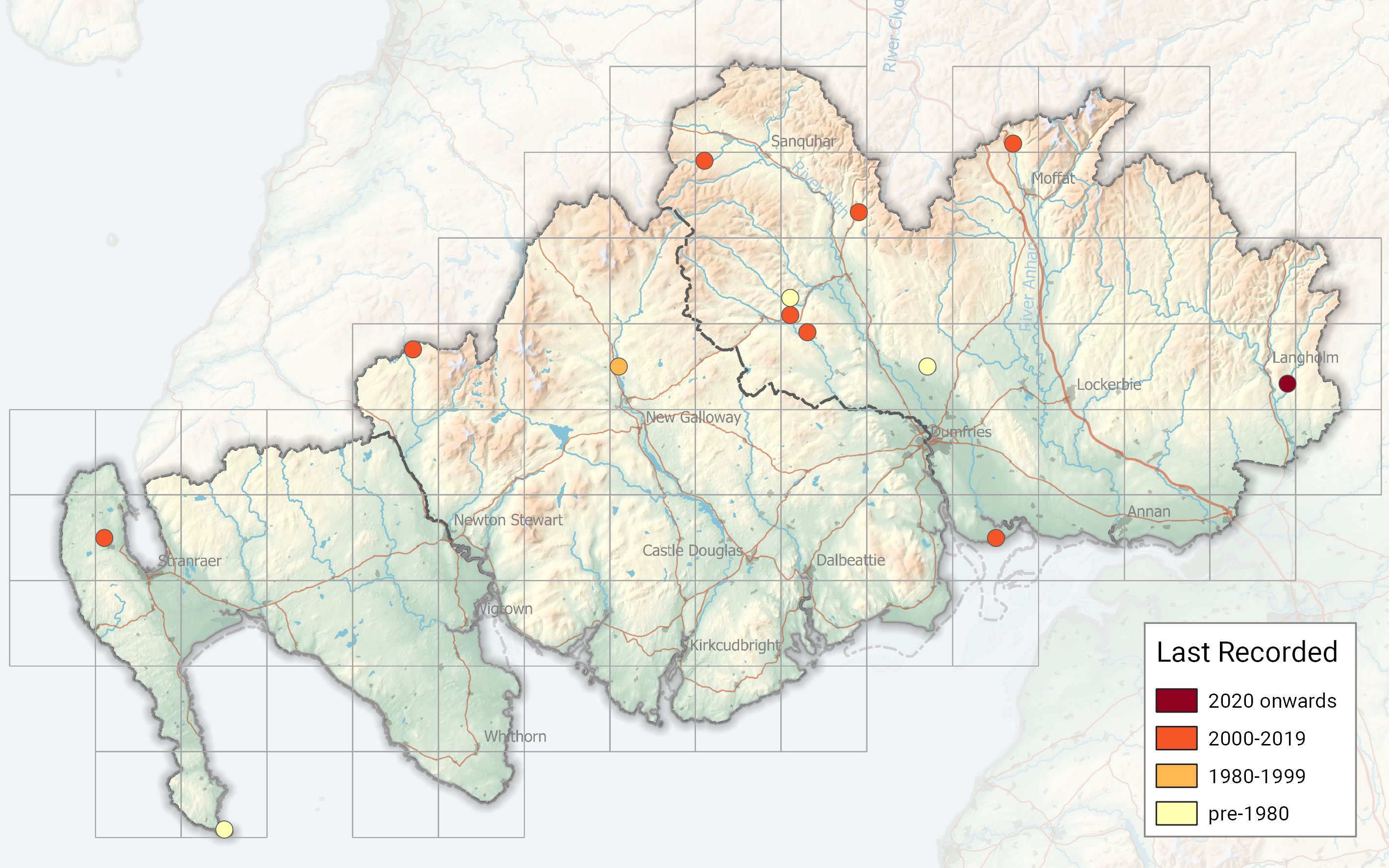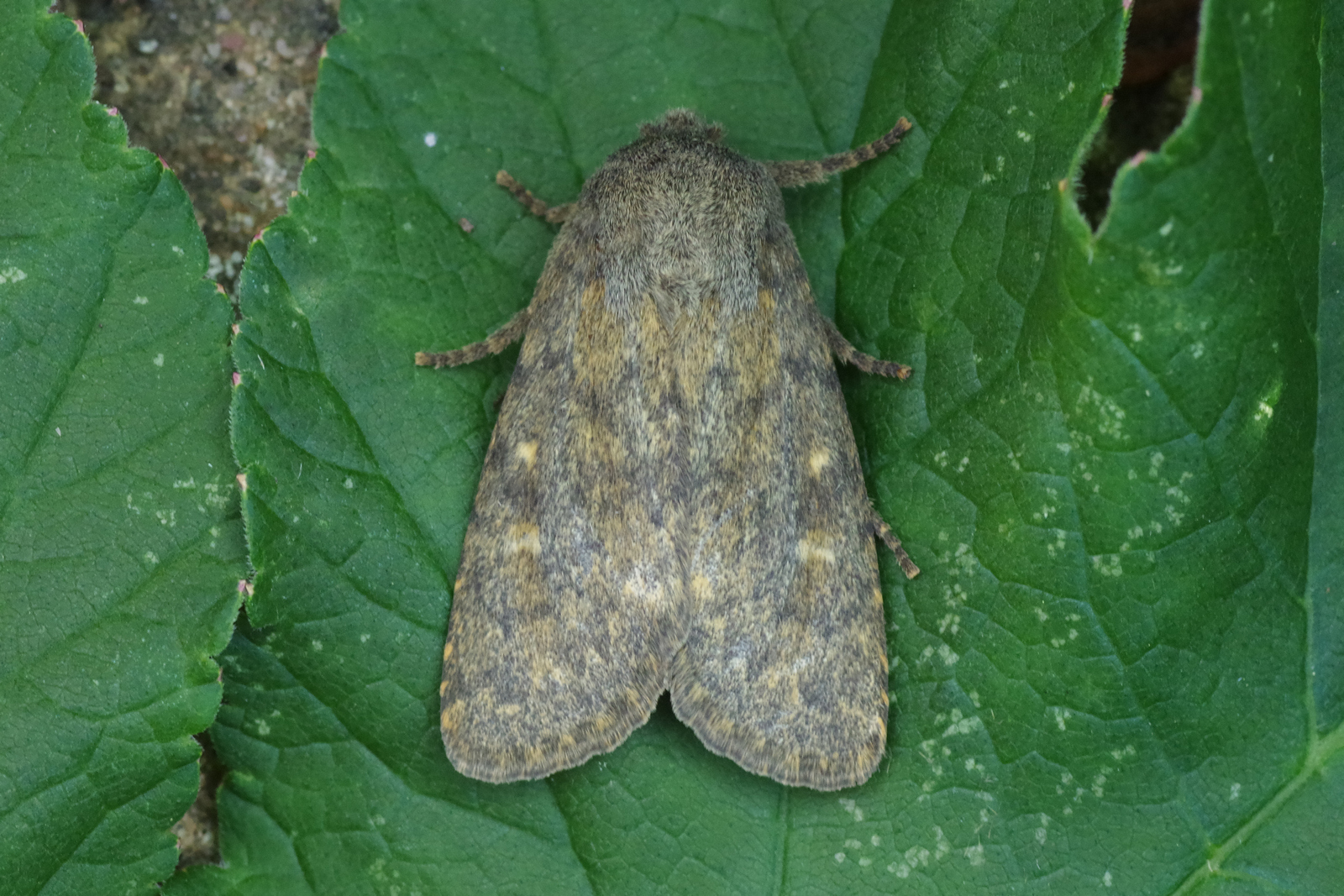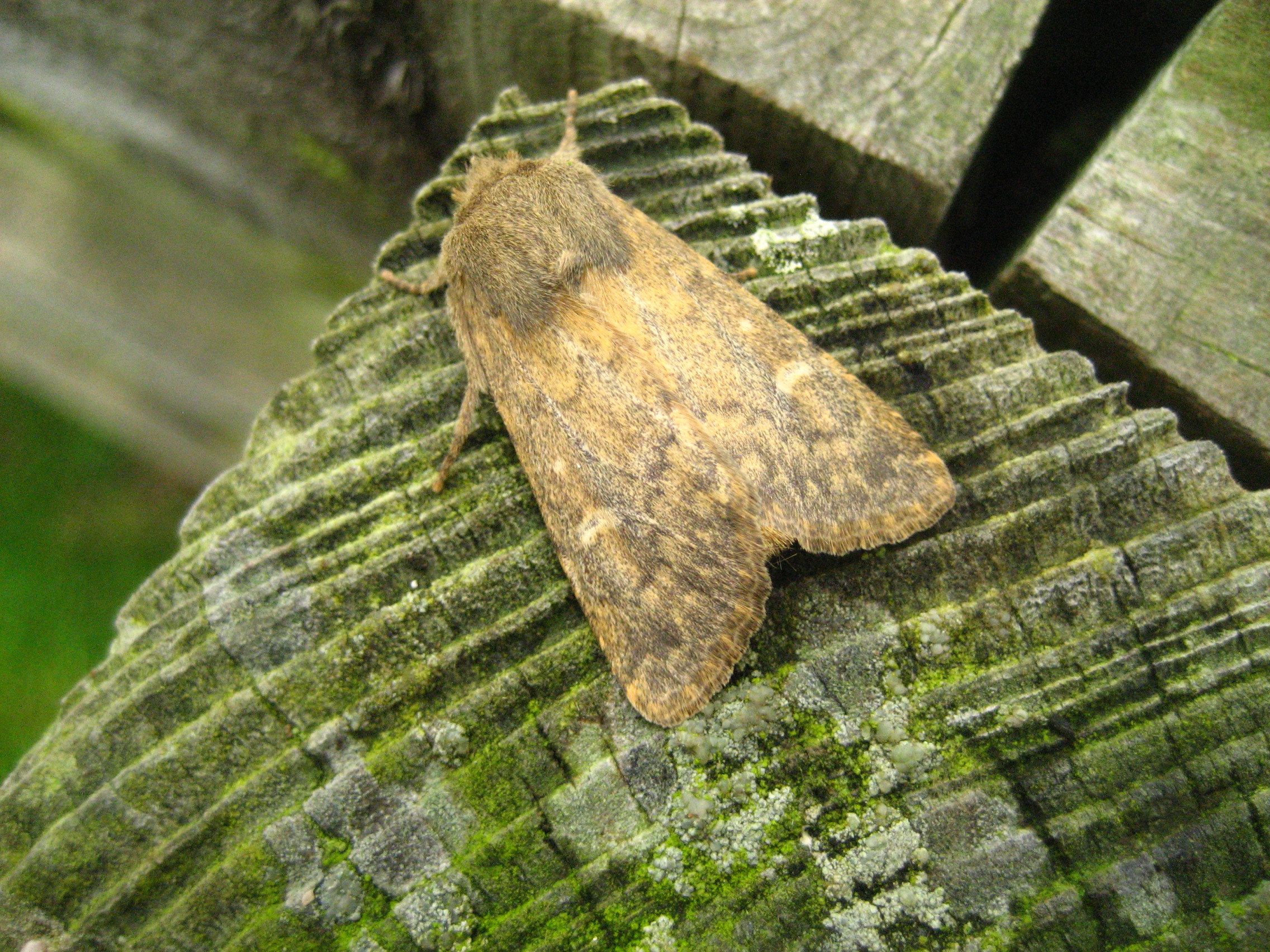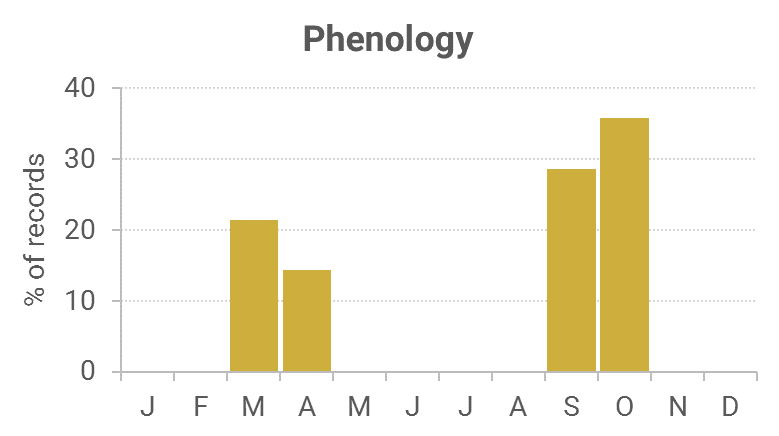Identification
Unmistakable.
Recording Method.
Attracted to light.
Life cycle
One generation. The Brindled Ochre mates in the autumn, with only the non-feeding female overwintering, in outbuildings, rocky outcrops or stone walls. By spring she lays her eggs on Hogweed or Wild Angelica, the larval foodplant. The larva burrows through the stems into the roots, where it pupates below the surface.
Larval foodplants
Hogweed and Wild Angelica.
Habitat
Upland grassland, moorland, marshes and coasts.
History
First recorded by Jackson (1910) who received a specimen from Henderson, keeper of Mull of Galloway Lighthouse (Wigtownshire) of one taken on the lantern in 1909.
Duncan and Cunningham (1952) recorded the first for Dumfriesshire when one was caught on 8th October 1951 at Tynron. A day earlier but in 1999 the first for Kirkcudbrightshire (VC73) was caught at Carsfad. Another was caught on the 19th September 2003 on Corserig Hill, Dumfriesshire, and one at Kirriereoch on 30th March 2009 was photographed. Presumably it was an overwintering female!





